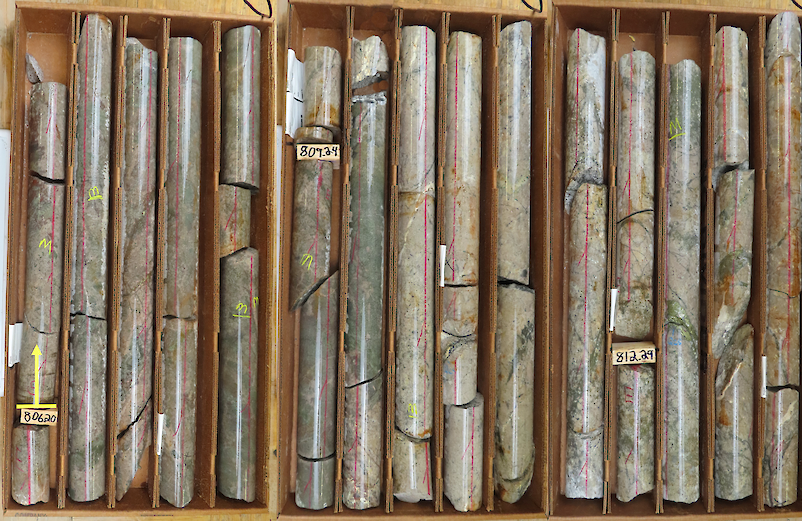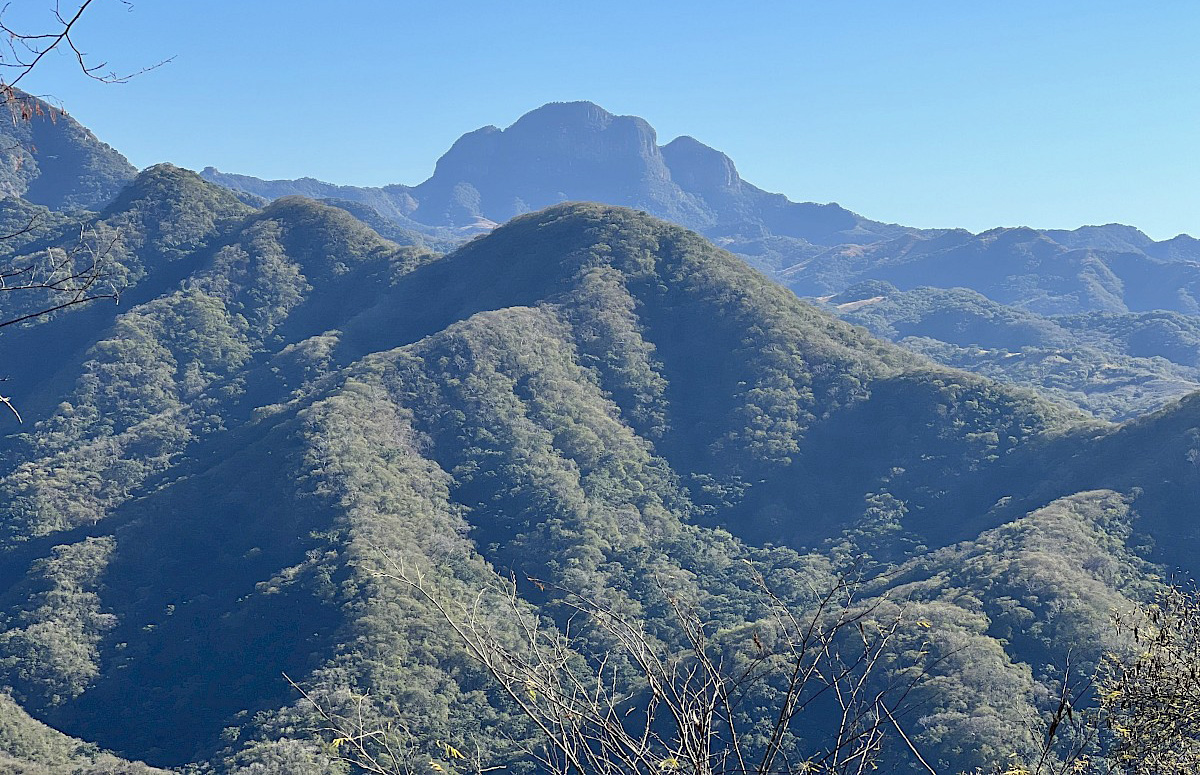The Gold Report: Rick Rule talks a lot about how much money can be made investing in things people hate, or at least don't like very much. Throughout the first quarter of this year, natural resources as a whole seemed to be in that category. How do you create a successful investing strategy out of a contrarian philosophy?
Paul Wong: First, it takes a lot of patience to be contrarian. You also need to have a lot of discipline. Probably more important than anything else, you need sticky investors. That's the hardest thing to get on the planet right now, an investor willing to stick it out.
Contrarian investors have to have the stomach to buy when the market is in the midst of a violent selloff, and they have to have the wherewithal to ride the volatility of the storm. That's the patience and the discipline part. Successful bottomfishing investors have to be able to discern the fine line between a company that could rally hard after a down leg and one that is on the verge of going bankrupt. You can throw luck into the requirements for being a contrarian investor as well, but at the end of the day it is a challenging way to approach building a portfolio so it is a good thing it sometimes pays off so dramatically.
"Pretium Resources Inc.'s Brucejack project is a spectacular deposit."
Mutual funds aren't traditionally built to be contrarian. I remember a joke I learned when I was a junior portfolio manager. I mentioned to someone that a stock could be a great investment in three or five years' time, and the fellow shot back to me, "Yes, my successor will look quite brilliant when that happens." That's the problem with long-term, contrarian-type investments. It may be a great idea, but you may not have a job by the time it pays off.
TGR: Does it take a lot more homework to be a contrarian investor than following an index or a blue chip stock?
Maria Smirnova: Certainly, but that's what we do here. We stay in touch with the companies in our universe all the time. We get to know the management teams. So for us, it's par for the course.
TGR: That distaste for precious metals, particularly gold, seems to be softening lately. What is your working estimate for gold prices through the rest of 2015?
PW: We see gold prices range bound between $1,150 an ounce ($1,150/oz) and $1,300/oz. What's driving gold right now is the volatility in the currency market. The U.S. dollar has been strengthening against every currency on the planet based on monetary policy. The U.S. is just in a different phase of its economic cycle than everyone else. The Federal Reserve Board is now focused on increasing rates, possibly as soon as December of this year. Conversely, Europe and Japan are still in quantitative easing mode. They're looking aggressively to lower rates. Paired with attractive bond yields and a domestic economy that is relatively stable, the U.S. dollar will probably continue to be strong and that has an impact on gold prices.
TGR: Paul, you took the helm of the Sprott Gold and Precious Minerals Fund (SPR300:TSX) in late January. Like the market, it's had some challenging quarterly results. What adjustments have you made and why?
PW: The main thing we did was increase the overall liquidity of the fund. We break the fund into two parts, a trading part and a core portfolio part. The trading part is mostly made up of the large-cap names because they are more liquid. We are still very much in the long secular bear phase of the market. We may be in the late innings of it, but we're still in the retrenching game. That is why it is important to trade gold. It's one way to add value. To protect the downside in the portfolio, we have to be actively trading. That requires increasing the proportion of larger, more liquid names in the portfolio.
TGR: On the trading side of the portfolio, has what makes a good short-term trade changed as we've moved into this part of the cycle?
PW: No. It's typically the same. We always look for companies with exceptional market negativity that get caught up in a selling frenzy, but have the ability to rebound. That is a buying opportunity.
The converse is also true. A stock that had a tremendous run and is now overvalued is an opportunity to sell calls to provide downside protection while maintaining exposure in the name. Or it is a chance to just sell the name outright. There are also companies that continue to execute and execute well. They act more like a large-cap core than a trading name, but I throw it in the trading bucket for simplicity's sake.
Another approach would be to buy the stock when sentiment bottoms or, if it's liquid enough, sell puts. That way you pick up a premium, which you can use to buy upside strikes (out of the money calls), which makes the trade self-funding. So there are lots of things you can do in the trade portfolio to add value to the fund.
TGR: What is the makeup of the core part of the portfolio?
PW: The core of the portfolio is about 50% of the value throughout the full cycle. It can go as low as 30% and as high as 70%, depending on how bullish or bearish the market gets. Typically, it is composed of 20–30 names. This is the part of the portfolio where we really focus on the fundamentals, the geotechnical and financial aspects of our stock selection process. This is mostly the mid- to small-cap names and the area where over the full cycle most of the alpha will be generated in the fund.
The trading part is mostly large-cap names, with some liquid mid-caps. This section of the portfolio is driven more by macro data. It's more about shifting beta exposure in gold equities as the market changes. Typically it's about half the portfolio through the full cycle. In the past, there have been about 20 names, so it's a bit more concentrated.
This is also the area where we keep our option exposure. We'll be using options more in the fund to protect downside and provide some upside when appropriate. It's also the part of the portfolio where if things go really bad, we can short. Bear exchange-traded funds help with the liquidity and maneuverability of the fund through various parts of the market phases.
TGR: What criteria do you use to pick core companies?
MS: We are not afraid to take longer-term positions. While trading names usually have mines in production already, for the core portfolio, we have a lot of developers or explorers. We look for quality deposits that we think have a high chance of becoming mines.
The most important factor is that it has to have a good management team. We always look for that. We look for size potential, world-class projects of 3–5 million ounces or more. In the last two decades, we have seen a significant drop off in discoveries of these world-class deposits, but that makes the ones we do find even more valuable. Then we look at a project's economics. We have two in-house technical experts we rely on. These geologists travel a lot to see projects in person. Size doesn't always lead to a good economic project, so there has to be grade, workable metallurgy and a favorable location in a stable jurisdiction. We look at a lot of criteria when deciding on a core position because these are longer-term positions and we have to be certain.
TGR: What are some of the core positions that you have strengthened since you took over?
MS: Some of the names that we have added to are Dalradian Resources Inc. (DNA:TSX), Lake Shore Gold Corp. (LSG:TSX) and Pretium Resources Inc. (PVG:TSX; PVG:NYSE).
TGR: Dalradian recently released an update on progress at the Curraghinalt gold project in Northern Ireland. What are the metrics you will be watching when it releases the prefeasibility study?
MS: Dalradian has been advancing its project quite nicely. We're expecting prefeasibility by the end of 2015, but before that, we're expecting an update in its resource estimate in Q3/15. We are looking for conversion of Inferred resources to Measured and Indicated resources. The company is doing an infill program, so we are looking for a demonstration of continuity and a demonstration of thickness and grades of the veins that it is exploring. Then in the prefeasibility study, we're looking for any changes in capital, operating expenses and recoveries based on metallurgical testing. The company is considering changing the processing method so that instead of shipping concentrate overseas, it will actually produce doré on site. That would be quite interesting.
TGR: Is the next big step for Pretium going to be federal permits or financing construction?
MS: The Brucejack project is a spectacular deposit. Pretium is expecting both the start of construction and the federal environmental decision in Q3/15. I expect the financing to come right after receiving the federal permit. The company is well cashed at this moment. It has over $100 million in the bank. I don't see financing as a big risk frankly because this is one of those world-class deposits with high grades. The company also has a notable investor in Zijin Mining Group Ltd. (601899:SHA). So I'm not concerned with financing. I am just looking for the federal decision to trigger that.
TGR: Lake Shore recently announced Q1/15 results. Did you like what you heard about shifts in operating costs?
MS: Yes, Q1/15 was good. More importantly, the trend is improving. Costs have come down. The company is generating free cash flow. The valuation looks quite favorable. The company has had some very exciting exploration results. We think it found a new deposit near its mine that can provide longer mine life or more production in the future, but that is still being explored.
TGR: What advice do you have for investors who are looking to tweak their portfolios during a challenging time in the sector?
PW: Have a plan. State your objective and establish a very clear buy and sell discipline. Don't get emotional; just stick with your plan.
That goes for any sector you care to invest in. As for gold, it comes back to making the most of the late innings of a bear market and preparing to reap the rewards of some pretty good rallies that could come off of that. So stick with your discipline. At some point in the next couple of years, we expect to see a pronounced bottoming in gold and that will probably be the stage for a more sustainable bull market. But we're not quite there yet.
TGR: Thank you both for your time and your insights.
Paul Wong is a senior portfolio manager at Sprott Asset Management. He joined Sprott in 2011 with more than 20 years of experience in the investment industry. He has been a portfolio manager responsible for the short positions of the Sprott hedge funds since 2012. Previously, he was a portfolio manager with Natcan Investment Management, where he managed three natural resource-related funds with more than $350 million in combined assets. Wong earned his Bachelor of Science in geology from the University of Toronto and is a CFA charterholder.
Maria Smirnova joined Sprott Asset Management in May 2005. Smirnova is a portfolio manager with more than 15 years of experience in the financial services industry. She has been part of the Sprott precious metals team since 2007 and has been a portfolio manager on the Sprott Silver Equities Class since its inception in 2012. Smirnova began her career at Excel Funds Management as operations manager, and subsequently worked in Product Development at Fidelity Investments. Smirnova graduated with distinction from the University of Toronto with a Bachelor of Commerce degree and has been a CFA charterholder since 2002. She graduated as a Bregman Scholar from the University of Toronto's MBA program in 2005.
Read what other experts are saying about:
Want to read more Gold Report interviews like this? Sign up for our free e-newsletter, and you'll learn when new articles have been published. To see a list of recent interviews with industry analysts and commentators, visit our Streetwise Interviews page.
DISCLOSURE:
1) JT Long conducted this interview for Streetwise Reports LLC, publisher of The Gold Report, The Energy Report and The Life Sciences Report, and provides services to Streetwise Reports as an employee. She owns, or her family owns, shares of the following companies mentioned in this interview: None.
2) The following companies mentioned in the interview are sponsors of Streetwise Reports: Pretium Resources Inc. The companies mentioned in this interview were not involved in any aspect of the interview preparation or post-interview editing so the expert could speak independently about the sector. Streetwise Reports does not accept stock in exchange for its services.
3) Paul Wong: I own, or my family owns, shares of the following companies mentioned in this interview: None. I personally am, or my family is, paid by the following companies mentioned in this interview: None. Dalradian Resources Inc., Lake Shore Gold Corp. and Pretium Resources Inc. are all in the Sprott Gold and Precious Minerals Fund. I was not paid by Streetwise Reports for participating in this interview. Comments and opinions expressed are my own comments and opinions. I determined and had final say over which companies would be included in the interview based on my research, understanding of the sector and interview theme. I had the opportunity to review the interview for accuracy as of the date of the interview and am responsible for the content of the interview.
4) Maria Smirnova: I own, or my family owns, shares of the following companies mentioned in this interview: None. I personally am, or my family is, paid by the following companies mentioned in this interview: None. Dalradian Resources Inc., Lake Shore Gold Corp. and Pretium Resources Inc. are all in the Sprott Gold and Precious Minerals Fund. I was not paid by Streetwise Reports for participating in this interview. Comments and opinions expressed are my own comments and opinions. I determined and had final say over which companies would be included in the interview based on my research, understanding of the sector and interview theme. I had the opportunity to review the interview for accuracy as of the date of the interview and am responsible for the content of the interview.
5) Interviews are edited for clarity. Streetwise Reports does not make editorial comments or change experts' statements without their consent.
6) The interview does not constitute investment advice. Each reader is encouraged to consult with his or her individual financial professional and any action a reader takes as a result of information presented here is his or her own responsibility. By opening this page, each reader accepts and agrees to Streetwise Reports' terms of use and full legal disclaimer.
7) From time to time, Streetwise Reports LLC and its directors, officers, employees or members of their families, as well as persons interviewed for articles and interviews on the site, may have a long or short position in securities mentioned. Directors, officers, employees or members of their families are prohibited from making purchases and/or sales of those securities in the open market or otherwise during the up-to-four-week interval from the time of the interview until after it publishes.






































